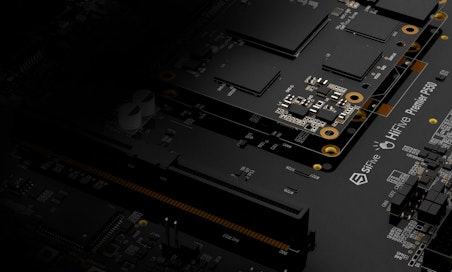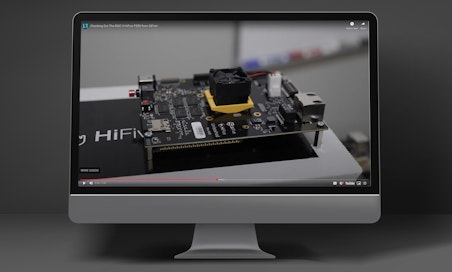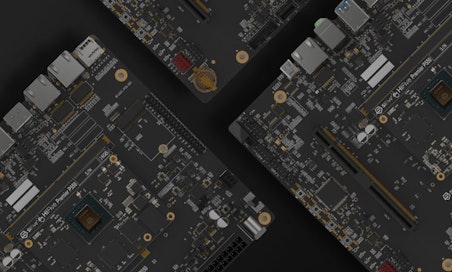SiFive Blog
The latest insights, and deeper technology dives, from RISC-V leaders

RISC-V for the Datacenter: Introducing the P870-D
One of the primary motivations behind my decision to join SiFive was the opportunity to define, articulate and execute our go-to-market initiatives for a range of high value market segments. Several analysts have created their estimates of market share growth into these segments including Omdia (see chart below). SiFive has strong momentum, but, to me, the infrastructure/datacenter segments are particularly exciting.

I know from my time that engaging in a new market segment is a challenging proposition. There needs to be a commitment from the company to see the course with the creation of a series of products for that segment, investment in nurturing an ecosystem and to pivot based on feedback received from customers, changes in the market dynamics and the competitive landscape.
I am thrilled to be part of a cross functional team that is releasing the P870-D product. We have delivered early versions of the CPU core to help customers get started on their system-on-chip developments and will be releasing a final version later this year.
Let’s take a step back as to why I feel now is the time for a new disruption to occur in data center architectures. At a high level, I see three primary motivations.
-
Increased use of open-source APIs and foundational software across use cases. This enables new technologies to participate more easily than having to rely on 3rd parties to make the decision to support a new processor architecture. This is one of the challenges that Arm has faced in participating in the Enterprise Computing segment as so much software remains optimized for only x86. In the cloud domain, the RISC-V ecosystem still has a long way to go. I see us now moving from a “ported to” stage into a “fully optimized-for” RISC-V phase. Primarily, this work is being executed in the RISE organization where SiFive is an active participant. RISE is dedicated to enabling a robust software ecosystem specifically for application processors that includes compilers, toolchains, system libraries, kernel, virtualization, programming languages, Linux distribution integration, and tools for debug and profiling.
-
Sustainability, cost and/or performance concerns are driving need for innovation, and one size does not fit all. Fundamentally, the disruption (which is causing a reason for companies to look at alternatives) here is AI. Training a large language model like OpenAI’s GPT-3 uses nearly 1,300 megawatt-hours (MWh) of electricity, the annual consumption of about 130 US homes. According to the IEA, a single Google search takes 0.3 watt-hours of electricity, while a ChatGPT request takes 2.9 watt-hours. If ChatGPT were integrated into the nine billion searches done each day, the IEA says, the electricity demand would increase by 10 terawatt-hours a year —- the amount consumed by about 1.5 million European Union residents. The other disruption is the desire to shift decision making to the edge as opposed to processing occurring exclusively in the cloud. This creates the need for extremely stringent cost, power and performance targets to be met.
-
A desire from the industry for increased resilience to supply chain disruption. Solutions must remain valid for years in order to generate the desired total cost of ownership benefits. The fact that RISC-V is an open standard AND that everyone is empowered to participate in advancing the architecture is a major benefit There is more detail in this interview I conducted with betanews in July 2024.
For more information, check out my interview I conducted with BetanNews in July 2024.
The P870-D processor is a purpose built processor for datacenter applications as part of a broader family of processors that are focused on use cases that demand higher performance. It is important to add protections on memories, processor architectural states (register files, control and status registers (CSR)) and key structures of the datapath including interconnect and shared cache controller to deliver the system resilience needed to handle errors.
The inclusion of the CHI interface, coupled with partnerships with providers of complementary network on chip (NoC) technology such as Arteris enables our mutual customers to scale up systems into hundreds of cores, with on a single piece of silicon or using various die to die connectivity strategies for chiplets.

As opposed to performance at any cost, SiFive continues to look at performance inside specific size and power constraints. The result is a processor that enables the creation of infrastructure SoCs with higher compute density than using incumbent approaches. This is appropriate for workloads that require the execution of many compute tasks in parallel such as including native RISC-V build servers, video streaming, storage, and web appliances.
The real system benefits come when this technology is combined with dedicated AI processing.
This combination of general-purpose computing (which can harness foundational open-source software) along with customized hardware is what I believe is the key combination of technology critical to addressing the power and cost challenges listed above.
From a software perspective, our target datacenter segments harness a combination of open source software and first party software. The foundational open source software elements already exist for RISC-V and I am seeing increased acceleration of “optimized-for-RISC-V” components due to the collaborative efforts across the community such as RISE. The capabilities of the P870-D processor are well aligned with RISC-V International work in this area as well as the platform specification work that is underway, enabling customers to reuse in their own designs, saving time, cost and increasing the chances of program success.

Embracing AI in a cost-, power- and future-proofing way, requires the creation of innovative solutions. We feel that the people that are in the best place to define those solutions are those that are closest to the specific use case. This is one of the fundamental advantages that RISC-V brings and an area that SiFive is focused on enabling as effectively as possible. Today’s announcement represents a solid first step. Our roadmaps for both the performance and intelligence product lines will be driven based on inputs from customers as they look to deploy P870-D based chips and systems in 2025 and beyond.
If you’d like to hear more about these solutions contact your sales representative.











